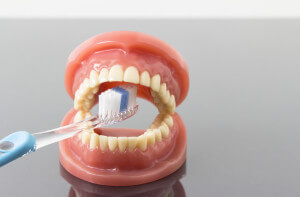 If your smile were the hero of an epic saga, dental plaque would be the main villain. Most people are familiar with the sticky, sometimes fuzzy-feeling substance that coats their teeth and gums from time to time. Yet, they may not realize why much of preventive dentistry focuses on controlling dental plaque.
If your smile were the hero of an epic saga, dental plaque would be the main villain. Most people are familiar with the sticky, sometimes fuzzy-feeling substance that coats their teeth and gums from time to time. Yet, they may not realize why much of preventive dentistry focuses on controlling dental plaque.
With a firm belief that knowledge is power, we explain what you should know about plaque, and why slacking even a little in your dental hygiene can allow plaque to wreak havoc with your oral health.
How Plaque is Formed
Wouldn’t it be nice if brushing your teeth were only necessary when plaque threatened your oral health? Well, it is. Unfortunately, plaque is a constant threat to your oral health, ergo the need to brush and floss your teeth at least twice every day. If plaque’s icky presence doesn’t make you uncomfortable, then you should know that it’s secreted by masses of oral bacteria, of which there are about 600 identifiable kinds (even in a healthy mouth).
As living organisms, bacteria tend to multiply, and when enough of them gather in your mouth, they form plaque to protect themselves from saliva and your body’s immune reactions. It’s also a nifty way to cling to your teeth and gums, which brings us to our next point—why plaque is dangerous.
Why Plaque is So Dangerous
Of the myriad germs that form dental plaque, some are specifically harmful to your oral health. For instance, Streptococcus mutans consume sugar and other fermentable carbs from your diet, then metabolize them into acid, which weakens your enamel and depletes your teeth of minerals. After a while, your enamel can grow too weak to prevent bacterial infection and tooth decay.
Other germs irritate your gum tissue, causing it to recede from your teeth, and manipulate your body’s inflammatory response, leading to uncontrolled gum inflammation and the onset of gum disease.
Controlling Plaque to Prevent Dental Issues
Brushing and flossing are essential, but they can only do so much. As humans, we’re bound to miss a spot now and then. When we do, plaque may calcify, or harden, into tartar—a more stubborn form of plaque that requires professional tools and maintenance to remove. Be sure to attend your regular dental checkups and cleanings at least once every six months so your dentist and hygienist can help you control harmful plaque and tartar.






